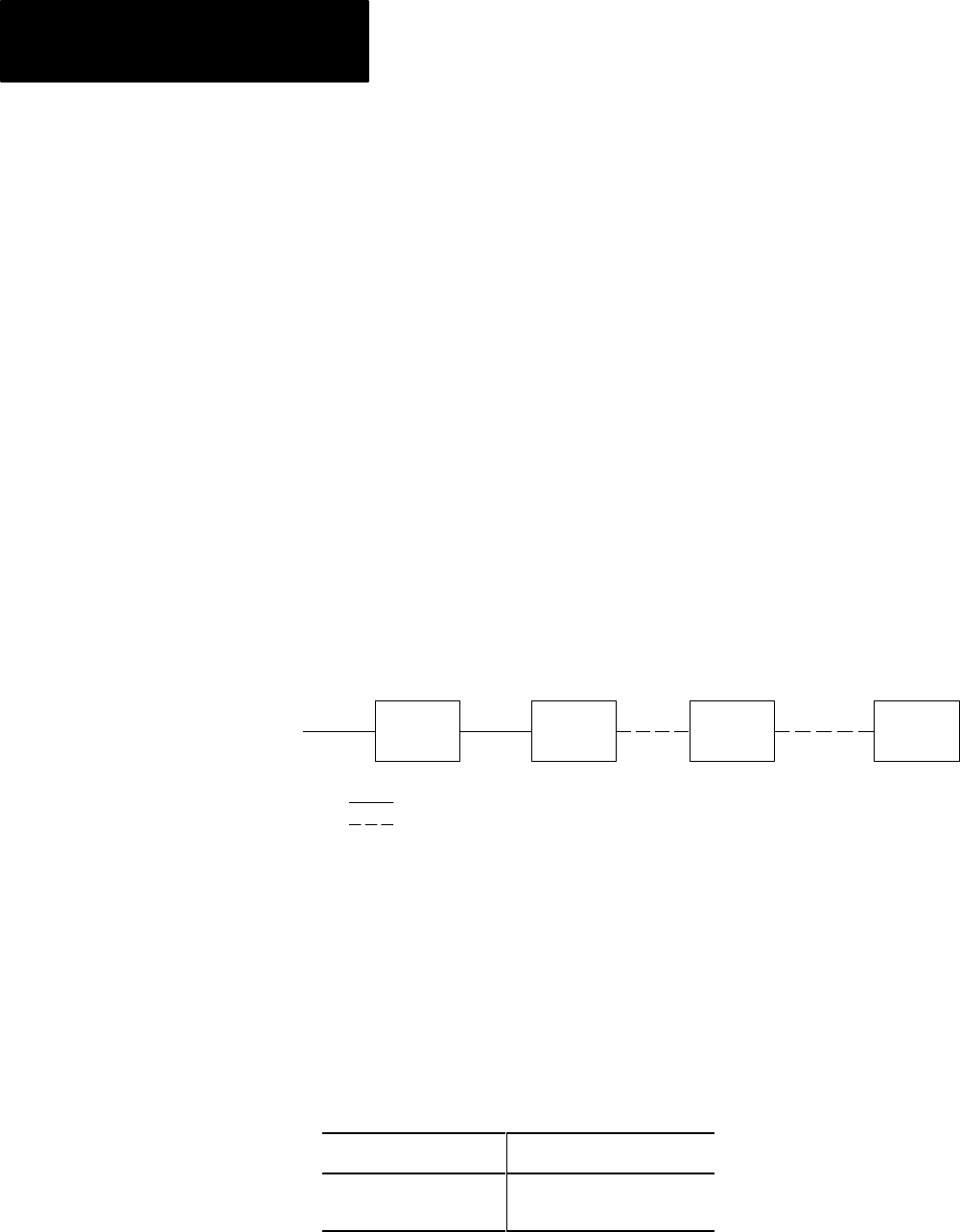User Manual Owner's manual
Table Of Contents
- 1772-6.5.8, Mini-PLC-2/02, -2/16, -2/17 Processor, User Manual
- Important User Information
- Summary of Changes
- Table of Contents
- 1 - Using This Manual
- 2 - Fundamentals of a Programmable Controller
- 3 - Hardware Features
- 4 - Installing Your Programmable Controller
- 5 - Starting Your Processor
- 6 - Maintaining and Troubleshooting Your Processor
- 7 - Memory Organization
- 8 - Scan Theory
- 9 - Relay-Like Instructions
- 10 - Program Control Instructions
- 11 - Timers and Counters
- 12 - Data Manipulation and Compare Instructions
- 13 - Three-Digit Math Instructions
- 14 - EAF Math Instructions
- 15 - EAF Log, Trig, and FIFO Instructions
- 16 - EAF Process Control Instructions
- 17 - Jump Instructions and Subroutines
- 18 - Block Transfer
- 19 - Data Transfer Instructions
- 20 - Bit Shift Registers
- 21 - Sequencers
- 22 - Selectable Timer Interrupts
- 23 - Report Generation
- 24 - Program Editing
- 25 - Programming Techniques
- 26 - Program Troubleshooting
- A - Specifications
- B - Processor Comparison Chart
- C - Number Systems
- D - Glossary
- E - Quick Reference
- Index
- Back Cover

RelayLike Instructions
Chapter 9
9-2
Here, a series of conditions (C2, C2, C3) must be true before action A
is performed.
C1 = Input switch 1. When the switch is on, this condition is true. This
switch turns on a conveyer belt.
C2 = Input sensor 1. When the sensor is off, this condition is true. This
sensor detects if the temperature in the factory is below 40
o
C.
C3 = Input sensor 2. When the sensor is on, this condition is true. This
sensor detects the presence of a part of the conveyer belt.
A = The part will be drilled. The path of conditions is continuous, that is,
all conditions are true.
When C1, C2, and C3 are true, then a continuous path is made to a
particular action. In this case, the continuous path causes the part to be
drilled. When the path of conditions is continuous, we say that the rung is
true. When the path of conditions is not continuous, we say the rung
is false.
C1
True
C2
False
C3
True
A
True
False
Here the path of conditions is not continuous because condition 2 is false.
Therefore, the action A is not performed. We say the rung is false.
Set
vs. Reset
As a review, if the device goes on, then we say the corresponding bit in
data table is set to a 1. If the device goes off, we say the corresponding bit
in data table is reset to a 0. (From this point on, set means the on-condition
or 1. Reset means the off-condition or 0.)
If the device is: Then a bit in memory is
on set
off reset










